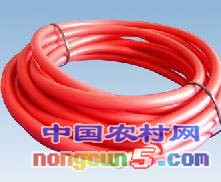
The phenomenon of surface discharge in these three cases is quite different. During live working, the third case is common. The principle of discharge phenomenon in this case is described in detail below.
由于這種情況下電極本身的形狀和布置已經(jīng)使電場很不均勻,介質(zhì)表面積聚電荷使電壓重新分布所造成的電場畸變不會顯著降低沿面放電電壓。另外,電場垂直分量較小,沿表面也沒有較大的電容電流流過,放電過程中不會出現(xiàn)熱電離現(xiàn)象,故沒有明顯的滑閃放電。垂直于放電發(fā)展方向的介質(zhì)厚度對放電電壓實際上沒有影響。同前兩種情況相比,閃絡(luò)電壓數(shù)值更接近于空氣擊穿電壓。在這種情況下,需要提高沿面放電電壓的手段,一般是改進(jìn)電極形狀,以改善電極附近的電場,從而達(dá)到提高閃絡(luò)電壓的目的。

In this case, the shape and arrangement of the electrode itself have made the electric field very uneven, and the electric field distortion caused by the redistribution of the voltage caused by the accumulation of the surface charge of the dielectric will not significantly reduce the discharge voltage along the surface. In addition, the vertical component of the electric field is small, and there is no large capacitance current flowing along the surface. During the discharge process, there is no thermoelectric separation phenomenon, so there is no obvious flashover discharge. The dielectric thickness perpendicular to the development direction of discharge has no effect on the discharge voltage. Compared with the former two cases, the flashover voltage is closer to the air breakdown voltage. In this case, it is necessary to improve the discharge voltage along the surface by improving the electrode shape to improve the electric field near the electrode, so as to improve the flashover voltage








